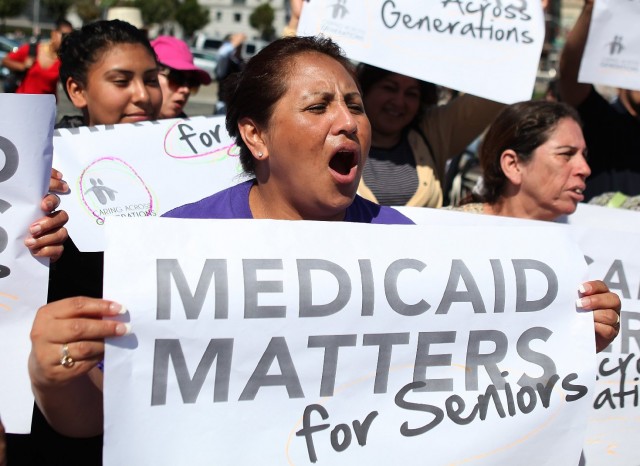"It is an integrated system that CCI is modeled on today," Trowbridge said.
PACE centers are having a tough time maintaining the same level of service with fewer dollars, she said. The most recent reduction -- a 10 percent Medi-Cal reimbursement cut passed by the Legislature in 2011 that started to go into effect at the end of last year -- is the most crippling, Trowbridge said.
An Assembly bill introduced last month aims to reverse the 10 percent cut to Medi-Cal, California's Medicaid program. Whether or not AB 1805 by Assembly member Nancy Skinner (D-Berkeley) is approved, the governor and the state's Department of Health Care Services have the discretion to exempt specific providers from the cut. They have exempted several types of providers in order to maintain access to care, but the state feels disinclined to exempt many more of them, according to DHCS Director Toby Douglas.
"We have continued to refine our reductions," Douglas said. "But at this point, we don't see any need to make any further changes to legislators' decision on the 10 percent reduction."
Advocates for seniors and the disabled think the need is critical, though.
Adult day health care is another type of service for seniors and the disabled, who are at risk of being institutionalized.
"Adult day health care is essentially skilled nursing care in a community setting," said Debbie Toth, executive director of Rehabilitation Services of Northern California in Pleasant Hill. "Same staffing, same therapy. And this Medi-Cal rate reduction threatens our whole industry."
"We have had 50 centers close during [the past two years] and in that time, about 16 percent of our industry has been wiped out," Toth said. "Our situation is a little more dire in that we have five centers that in two months will close if that rate is not restored."
Toth said the rate reduction has affected access to services, and that will only intensify over time.
"People will lose services. One of the arguments the department has made is that people will still have access to services and that this has not caused an access issue -- but it has caused an access issue," Toth said.
Douglas said state officials will keep tabs on the situation.
"As we continue to move forward," Douglas said, "we will continue to monitor access, looking at it through many dimensions."
California Among Lowest in Medicaid Reimbursement
California is among the lowest in the nation in Medicaid payments to providers, according to a 2009 study funded by the California HealthCare Foundation, which publishes California Healthline. The low ranking in that study was two years before the 10 percent cut was approved and more than four years before it began to take effect.
The access picture is bigger than just rates, though, Douglas said.
"Clearly rates are one of many important components," he said. "But there are many other pieces of the puzzle -- particularly in California, where 70 percent of the Medi-Cal patients are in Medi-Cal managed care."
In managed care, Douglas said, the situation is a little different. "What we see in our plans, they don't pay fee-for-service rates," he said. "In terms of monitoring, it's not just about providers, it's also about utilization. ... These are all factors we look at."
Nathan Allen, an OB-GYN physician in Sacramento, had a different view. As a graduate of UC-Davis School of Medicine three decades ago, he said, "It was impressed on me then, the need for community service." He set up practice in an underserved area of Sacramento called Del Paso Heights, and said he sees primarily Medi-Cal patients there.
"I've dedicated my life to this. But I had to close my office in Del Paso Heights because of the reimbursement rate reduction," Allen said.
"Physicians like me are going to go out of business because we can't afford to continue doing what we've dedicated our lives to be doing," he said.
Assembly member Shirley Weber (D-San Diego), chair of the Assembly budget subcommittee on health and human services, said the arithmetic seemed simple to her.
"People should be able to break even, or even be able to make a little bit more," Weber said. "We shouldn't have people going into poverty to serve the poor."
What is now an access problem could become an access crisis, she said, once an estimated two million Californians are added to Medi-Cal ranks in the near future.
"Clearly we can't keep adding people to our rolls and not have the physicians they need," Weber said. "I hear too many stories that tell me they can't stay in business with what we pay. If you're in business, you have to add and subtract, and you have to have enough to cover the people you serve."
[contextly_auto_sidebar id="c3SqHZYr1CtsnJWyXOck1j2NFfD93Qw9"]
